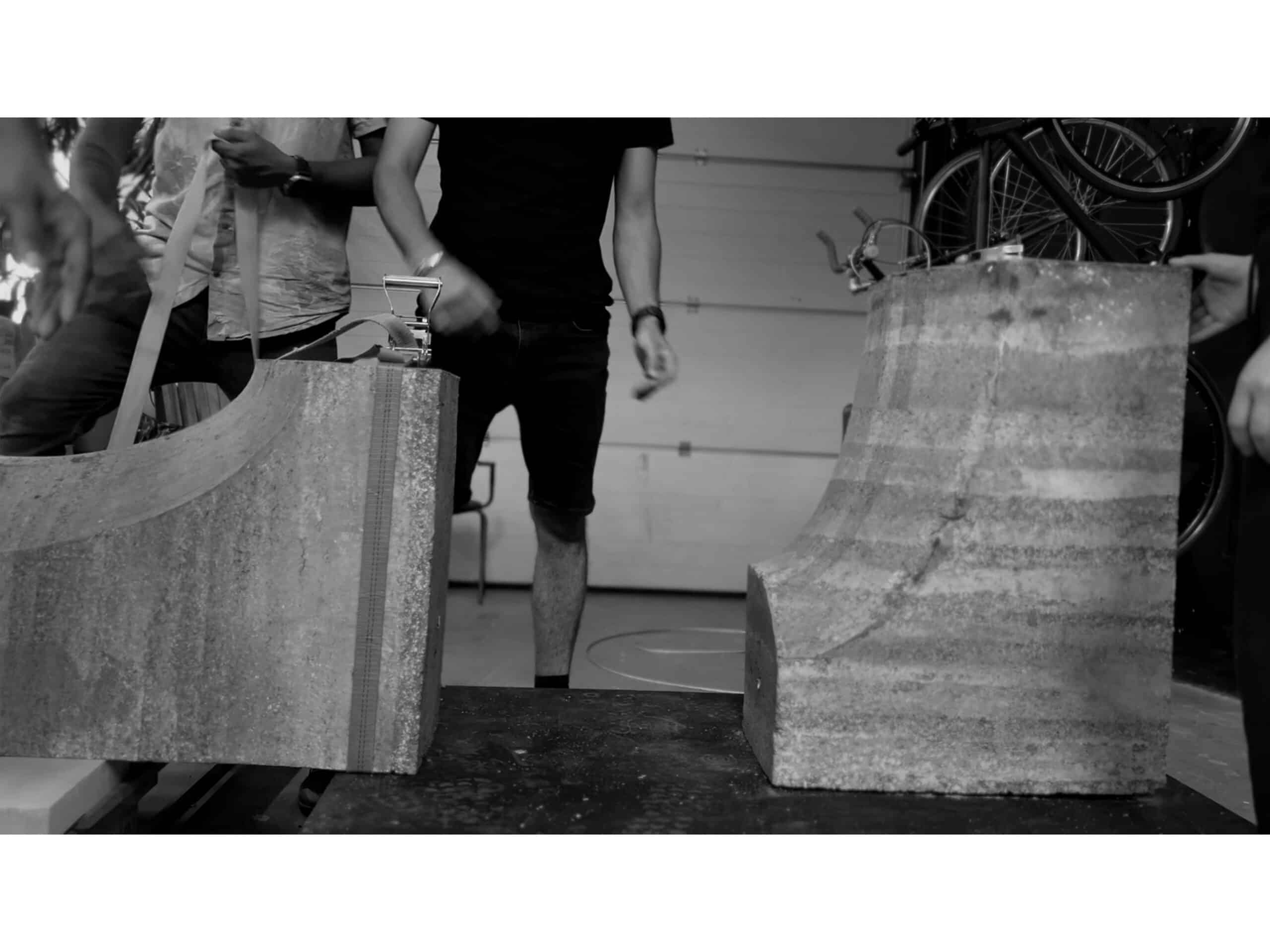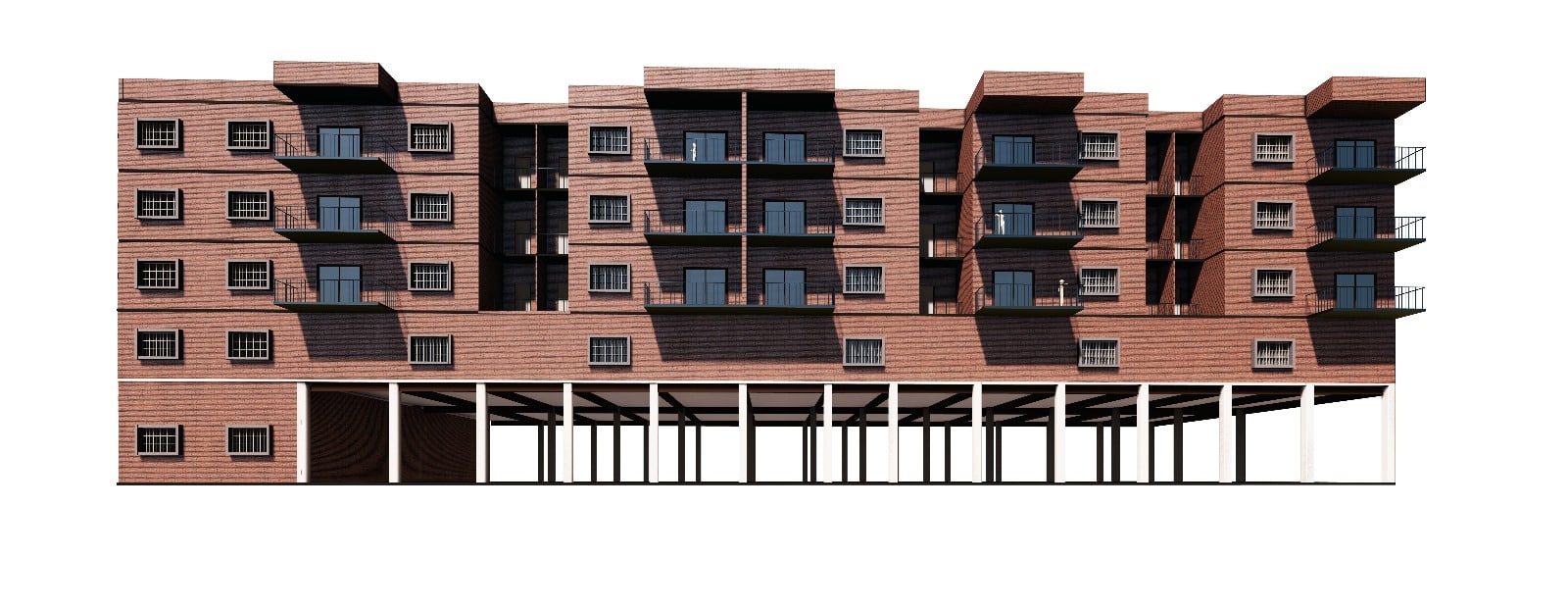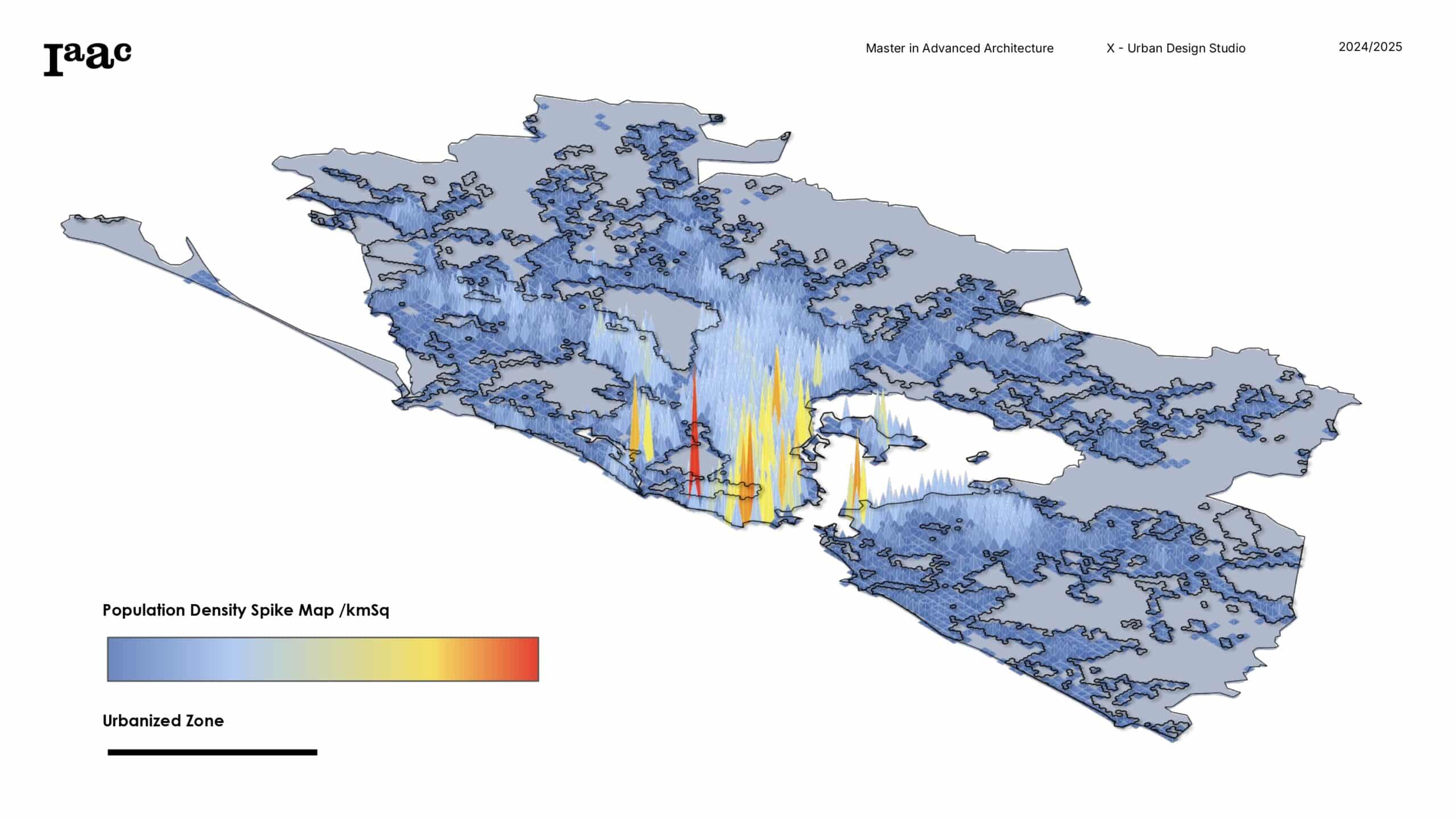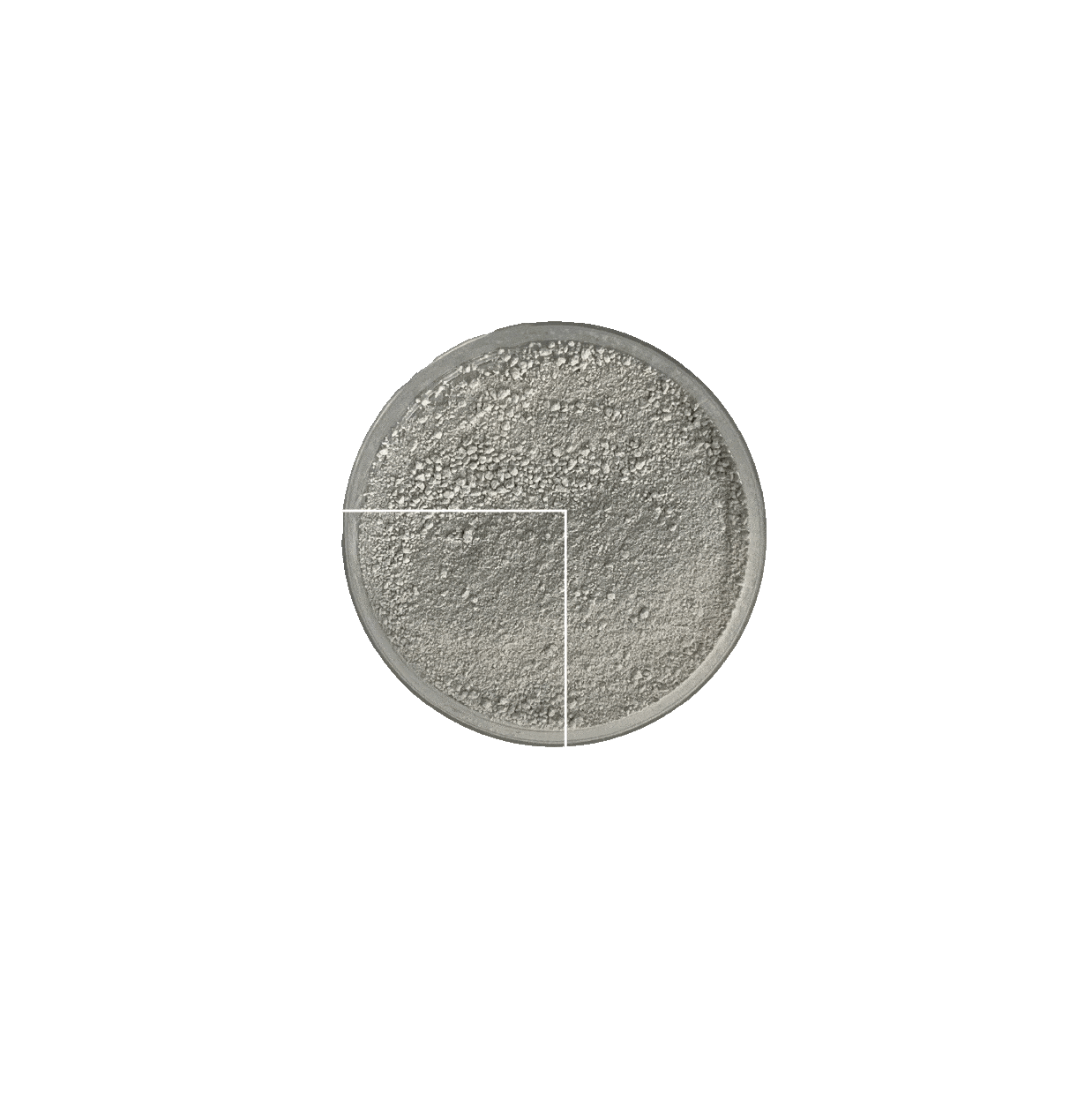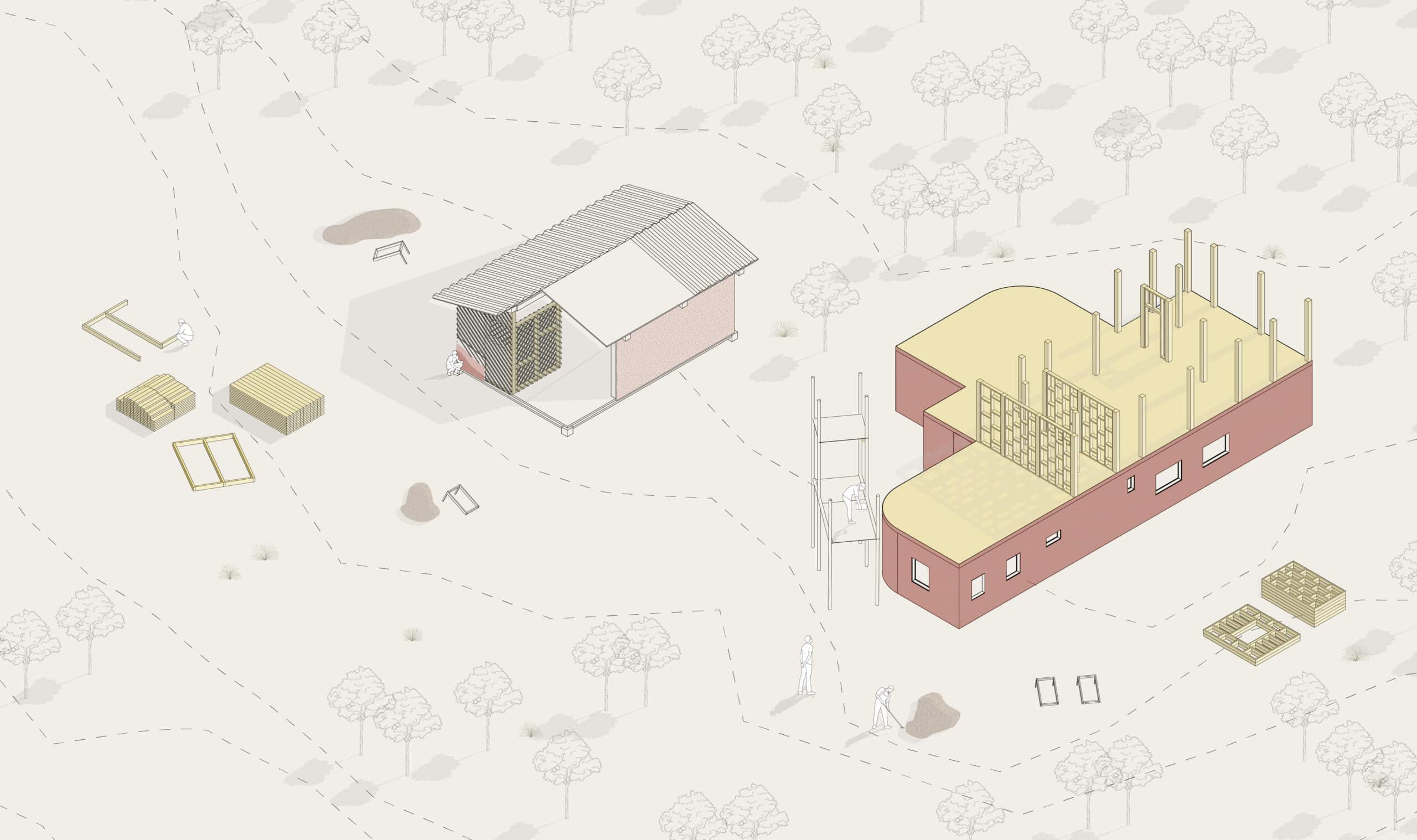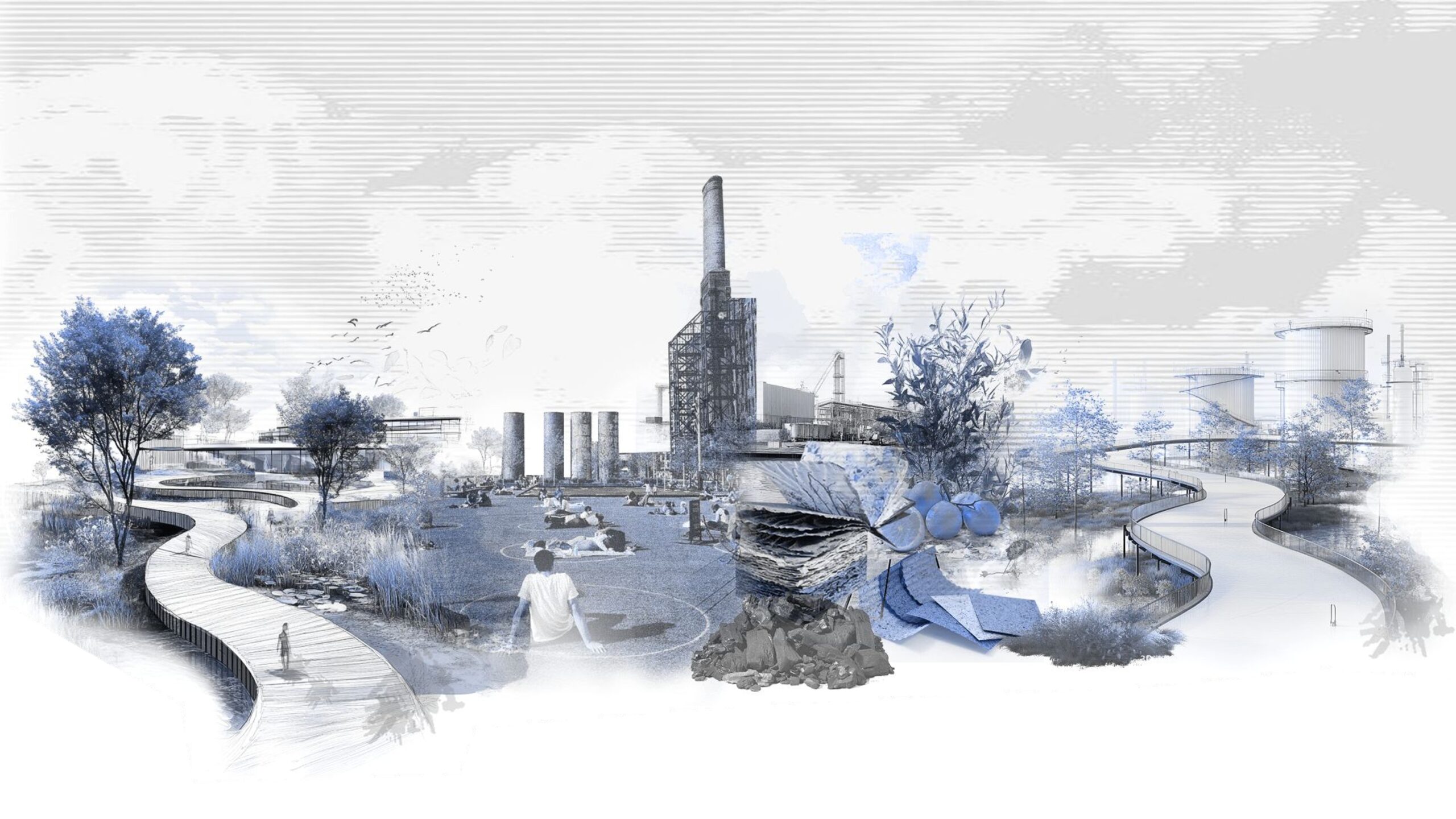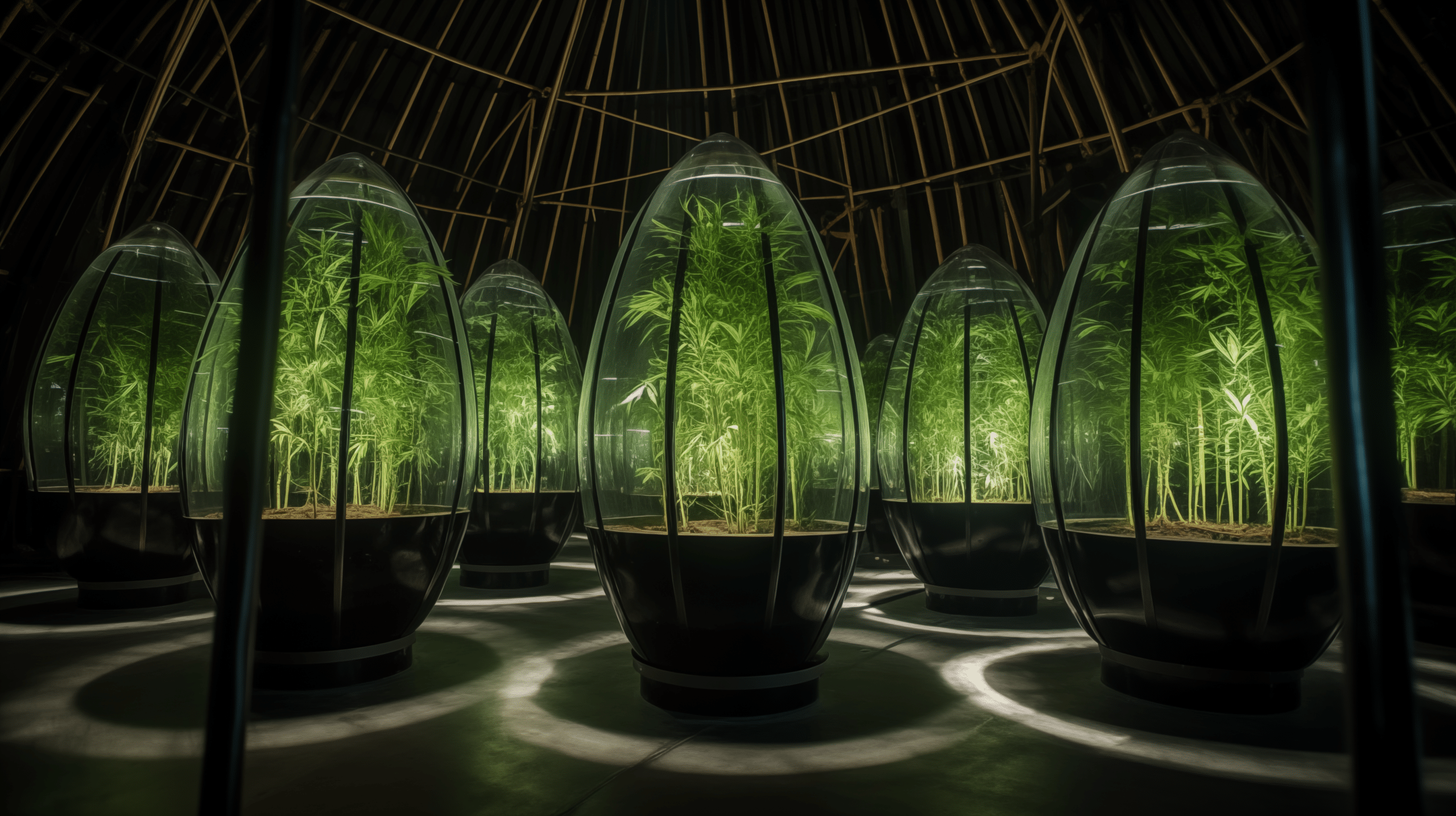SecondMatter
SecondMatter upcycles 85% construction and demolition waste into low-impact building units using a hybrid ramming-jamming technique. With 9 MPa strength and 7% lower carbon emissions, it forms walls, panels, and columns. Integrated into municipal waste systems, its compaction method adapts to unpredictable debris, turning urban waste into resilient, structural architecture within existing material cycles. What if … Read more

